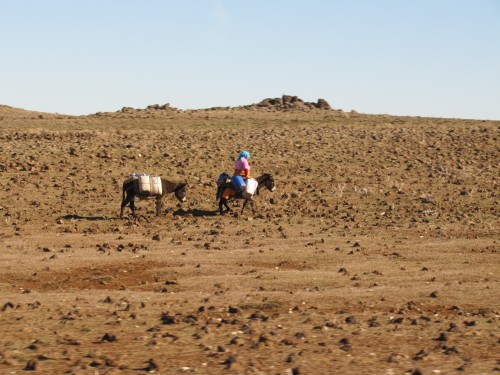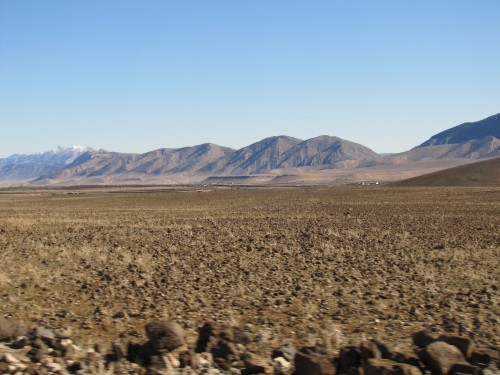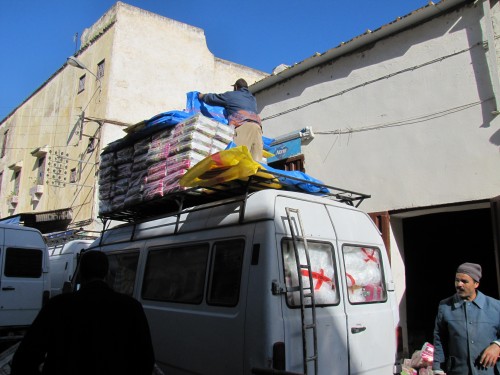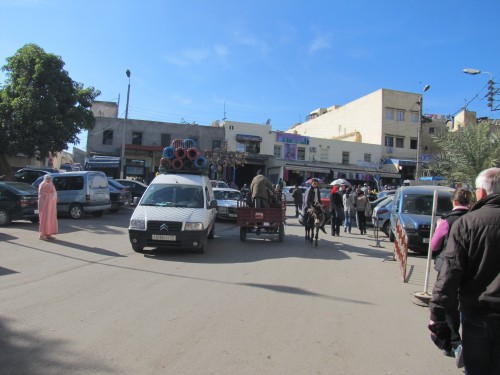Life can be hard in Morocco
While the cities and many of the towns of Morocco are modern and vibrant like we’d expect, rural Morocco in some parts has little in the way of modern facilities and infrastructure. While most of the country has a good supply of water and power, not everyone enjoys these amenities.
As we were travelling along south east of Fes I photographed this women heading off across a desolate landscape to collect water. Her two donkeys are festooned with water bottles for her to collect her daily supply. I have no idea how far she had to ride to get her water, but I did notice public wells or bores at intervals along the highway on which we travelled.
Transport in Fes, Morocco
One of the interesting things about visiting an unfamiliar country is the interesting – and unusual – sights one can see. Of course, the scenery is usually quite strange to what one is used to, as is the architecture and in places like Morocco, the clothing locals are wearing.
Something that fascinates me – not sure why – is the differing modes of transport. In crowded, busy cities like Fes in Morocco, walking is by far the most common mode of moving people, especially in the narrow lanes and streets in the medinas. Motor bikes are also in large numbers everywhere, even in the narrowest of lane ways.Pedestrians beware!
Today I feature two photos of transport. Above is a delivery van with a huge load on the pack rack on top of the van. I didn’t check up close, but I hope that either the rack is VERY strong, or the load is VERY light. The inside of the van is also stuffed full of something.
The photo below was taken quite near to the one above. It shows another van loaded up with pipes (or something like pipes) on top, as well as a converted cart being towed by either a horse or a motor bike, and for good measure, a donkey transporting a man. All these contrasting modes of transport are quite common in Morocco and go to make the visit so much more interesting.
Travelling by car in Addis Ababa
One of the interesting – and challenging – aspects of visiting a city like Addis Ababa in Ethiopia is travelling by car in the streets of the city. Because I was only staying for a few weeks last December I never applied for an international licence. Consequently I never had the opportunity to actually take the wheel of a car while there. I did, however, travel many times in cars with other drivers. Like most developing countries, driving in the traffic conditions in Addis Ababa is quite an experience.
In the photo above I have shown a part of the major ring route around the city. At the time this photo was taken the traffic was very light. All seems very organised and safe. All is not what it seems.
You will observe lanes marked on the road. This is not only misleading, it is totally inconsequential. Few drivers, if any, actually drive in the marked lanes. I quickly figured out that the markings were suggestions only; no-one actually drove within the lane markings. It is quite amazing that they don’t have far more serious accidents.
Cars, trucks, buses and other vehicles do not seem to be the major hazards when driving in Ethiopia. Two hazards stood out for me: pedestrians and donkeys – see the photo below. Pedestrians tend to use the road as a footpath. Not surprising – footpaths are so poorly maintained that no-one would want to walk on them. Or are they are totally non-existent.
And there seemed to be random donkeys crossing roads everywhere.





